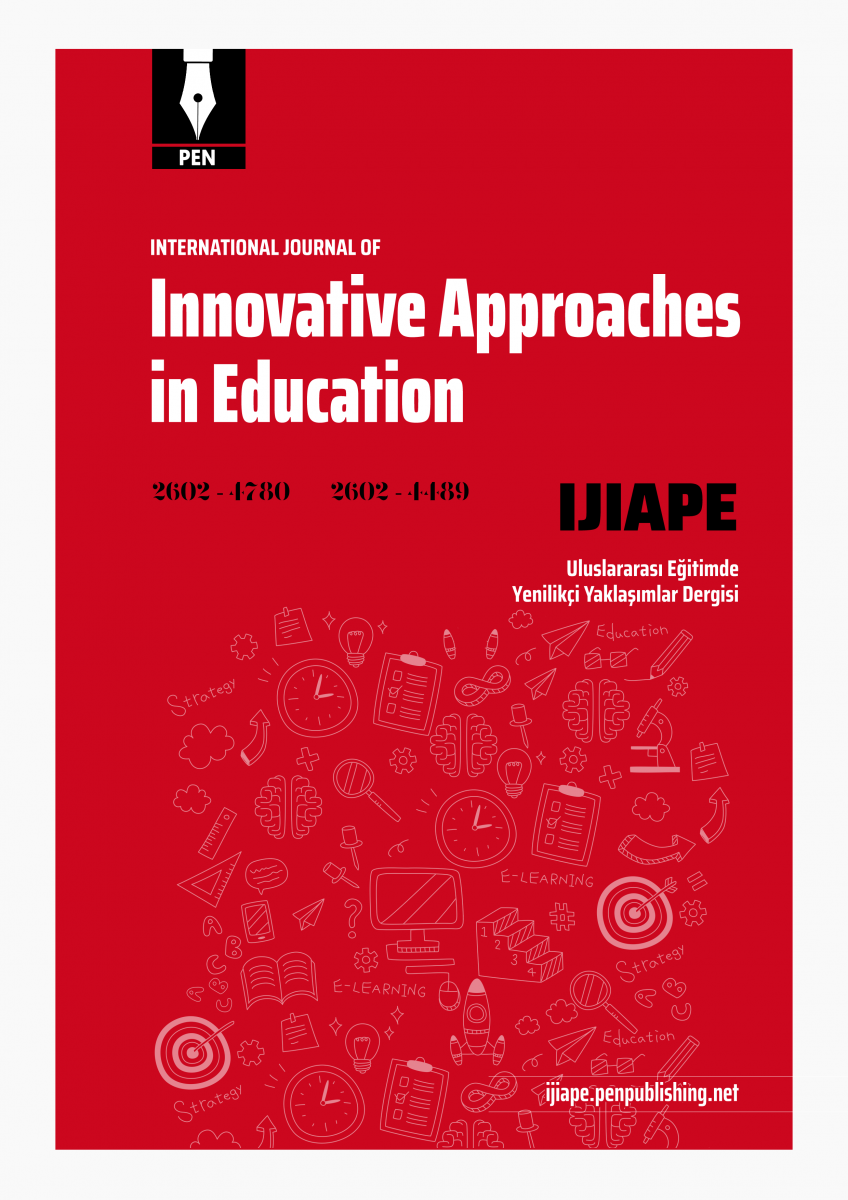- Artieda, G., & Muñoz, C. (2016). The LLAMA tests and the underlying structure of language aptitude at two levels of foreign language proficiency. Learning and Individual Differences, 50, 42-48. https://doi.org/10.1016/j.lindif.2016.06.023 [Google Scholar] [Crossref]
- Bachman, L. (1990). Fundamental considerations in language testing. Oxford: Oxford University Press. [Google Scholar]
- Baddeley, A. (2003). Working memory. New York; NY: Oxford University Press. [Google Scholar]
- Carroll, J. (1981) Twenty-five years of research on foreign language aptitude. In K. Diller (Ed.), Individual differences and universals in language learning aptitude (pp. 83–118). Rowley, MA: Newbury House. [Google Scholar]
- Carroll, J. B. (1990). Cognitive abilities in foreign language aptitude: Then and now. In T. S. Parry & C. W. Stansfield (Eds.), Language in education: Theory and practice 74. Language aptitude reconsidered (pp. 11-27). Washington, DC: ERIC Clearinghouse on Languages and Linguistics/CAL; Englewood Cliffs, NJ, US: Prentice Hall Regents/Prentice Hall. Carroll, J. B., & Sapon, S. M. (1959). Modern language aptitude test. San Antonio, TX: Psychological Corporation. [Google Scholar]
- de Graaff, R. (1997). The eXperanto experiment: effects of explicit instruction on second language acquisition. Studies in Second Language Acquisition, 19, 249–97. https://doi.org/10.1017/s0272263197002064 [Google Scholar] [Crossref]
- Ehrman, M. E., & Oxford, R. L. (1995). Cognition plus: Correlates of language learning success. Modern Language Journal, 79(1), 67–89. https://doi.org/10.2307/329394 [Google Scholar] [Crossref]
- Ellis, N. C. (1996). Working memory in the acquisition of vocabulary and syntax: Putting language in good order. The Quarterly Journal of Experimental Psychology Section A, 49(1), 234-250. https://doi.org/10.1080/027249896392883 [Google Scholar] [Crossref]
- Ellis, R. (2015). Understanding second language acquisition (2nd ed.). Oxford: Oxford University Press. [Google Scholar]
- Erlam, R. (2005) Language aptitude and its relationship to instructional effectiveness in second language acquisition. Language Teaching Research, 9, 147–71. https://doi.org/10.1191/1362168805lr161oa [Google Scholar] [Crossref]
- Higgs, T., & Krashen, S. (1983). Principles and practice in second language acquisition. The Modern Language Journal, 67(2), 168. https://doi.org/10.2307/328293 [Google Scholar] [Crossref]
- Li, S. (2013). The interactions between the effects of implicit and explicit feedback and individual differences in language analytic ability and working memory. The Modern Language Journal, 97(3), 634-654. https://doi.org/10.1111/j.1540-4781.2013.12030.x [Google Scholar] [Crossref]
- Meara, P. (2005). LLAMA language aptitude tests: The manual. Swansea: Lognostics. [Google Scholar]
- Nation, R., & McLaughlin, B. (1986) Novices and experts: an information processing approach to the ‘good language learner’ problem. Applied Psycholinguistics, 7, 41–56. https://doi.org/10.1017/s0142716400007177 [Google Scholar] [Crossref]
- Ortega, L. (2013). Understanding second language acquisition. New York, NY: Routledge. [Google Scholar]
- Petersen, C. R., & Al-Haik, A. R. (1976). The development of the defense language aptitude battery (DLAB). Educational and Psychological Measurement, 36(2), 369-380. https://doi.org/10.1177/001316447603600216 [Google Scholar] [Crossref]
- Pimsleur, P. (1968). Aptitude testing. Language learning, 18, 73-77. https://doi.org/10.1111/j.1467-1770.1968.tb00223.x [Google Scholar] [Crossref]
- Reber, A., Walkenfeld, F., & Hernstadt, R. (1991). Implicit and explicit learning: Individual differences and IQ. Journal of Experimental Psychology: Learning, Memory, and Cognition, 17(5), 888-896. doi: 10.1037//0278-7393.17.5.888 [Google Scholar] [Crossref]
- Robinson, P. (1995). Aptitude, awareness, and the fundamental similarity of implicit and explicit second language learning. Attention and Awareness in Foreign Language Learning, 9, 303-357. [Google Scholar]
- Robinson, P. (1996). Learning simple and complex second language rules under implicit, incidental, rule-search, and instructed conditions. Studies in Second Language Acquisition, 18(1), 27-67. https://doi.org/10.1017/s0272263100014674 [Google Scholar] [Crossref]
- Robinson, P. (2002) Learning conditions, aptitude complexes, and SLA: a framework for research and pedagogy. In P. Robinson (Ed.), Individual differences and instructed language learning (pp. 113–33). Amsterdam: John Benjamins. [Google Scholar]
- Rogers, V., Meara, P., Barnett-Legh, T., Curry, C., & Davie, E. (2017). Examining the LLAMA aptitude tests.. Journal of the European Second Language Association, 1(1), 49–60. DOI: http://doi.org/10.22599/jesla.24 [Google Scholar]
- Sasaki, M. (1999). Second language proficiency, foreign language aptitude, and intelligence. New York, NY: Peter Lang. [Google Scholar]
- Sheen, Y. (2007) The effect of focused written corrective feedback and language aptitude on ESL learners’ acquisition of articles. TESOL Quarterly, 41, 255–83. https://doi.org/10.1002/j.1545-7249.2007.tb00059.x [Google Scholar] [Crossref]
- Skehan, P. (1991). Individual differences in second language learning. Studies in Second Language Acquisition, 13(2), 275-298. https://doi.org/10.1017/S0272263100009979 [Google Scholar] [Crossref]
- Skehan, P. (1998). A cognitive approach to language learning. Oxford: Oxford University Press. [Google Scholar]
- Skehan, P. (2002). Theorising and updating aptitude. Individual Differences and Instructed Language Learning, 2, 69-94. https://doi.org/10.1075/lllt.2.06ske [Google Scholar] [Crossref]
- Skehan, P. (2016). Foreign language aptitude, acquisitional sequences, and psycholinguistic processes. In G. Granena, D. O. Jackson, & Y. Yilmaz (Eds.), Cognitive individual differences in second language processing and acquisition (pp. 17– 40). Amsterdam: John Benjamins. https://doi.org/10.1075/bpa.3.02ske [Google Scholar] [Crossref]
- Tagarelli, K. M., Mota, M. B., & Rebuschat, P. (2011). The role of working memory in implicit and explicit language learning. In Proceedings of the Annual Meeting of the Cognitive Science Society, 33. Retrieved from https://escholarship.org/uc/item/0r55c3fk [Google Scholar]
- The jamovi project (2019). jamovi. (Version 0.9) [Computer Software]. Retrieved from https://www.jamovi.org. [Google Scholar]
- Tomlinson, C. (2003). Fulfilling the promise of the differentiated classroom: Strategies and tools for responsive teaching. Alexandria, VA: Association for Supervision and Curriculum Development. [Google Scholar]
- VanPatten, B., & Smith, M. (2015). Aptitude as grammatical sensitivity and the initial stages of learning Japanese as a L2: Parametric variation and case marking. Studies in Second Language Acquisition, 37(1), 135-165. https://doi.org/10.1017/S0272263114000345 [Google Scholar] [Crossref]
- Williams, J. N. (1999) Memory, attention, and inductive learning. Studies in Second Language Acquisition, 21, 1–48. https://doi.org/10.1017/S0272263199001011 [Google Scholar] [Crossref]
- Yilmaz, Y. (2012). Relative effects of explicit and implicit feedback: The role of working memory capacity and language analytic ability. Applied Linguistics, 34(3), 344-368. https://doi.org/10.1093/applin/ams044 [Google Scholar] [Crossref]
|

